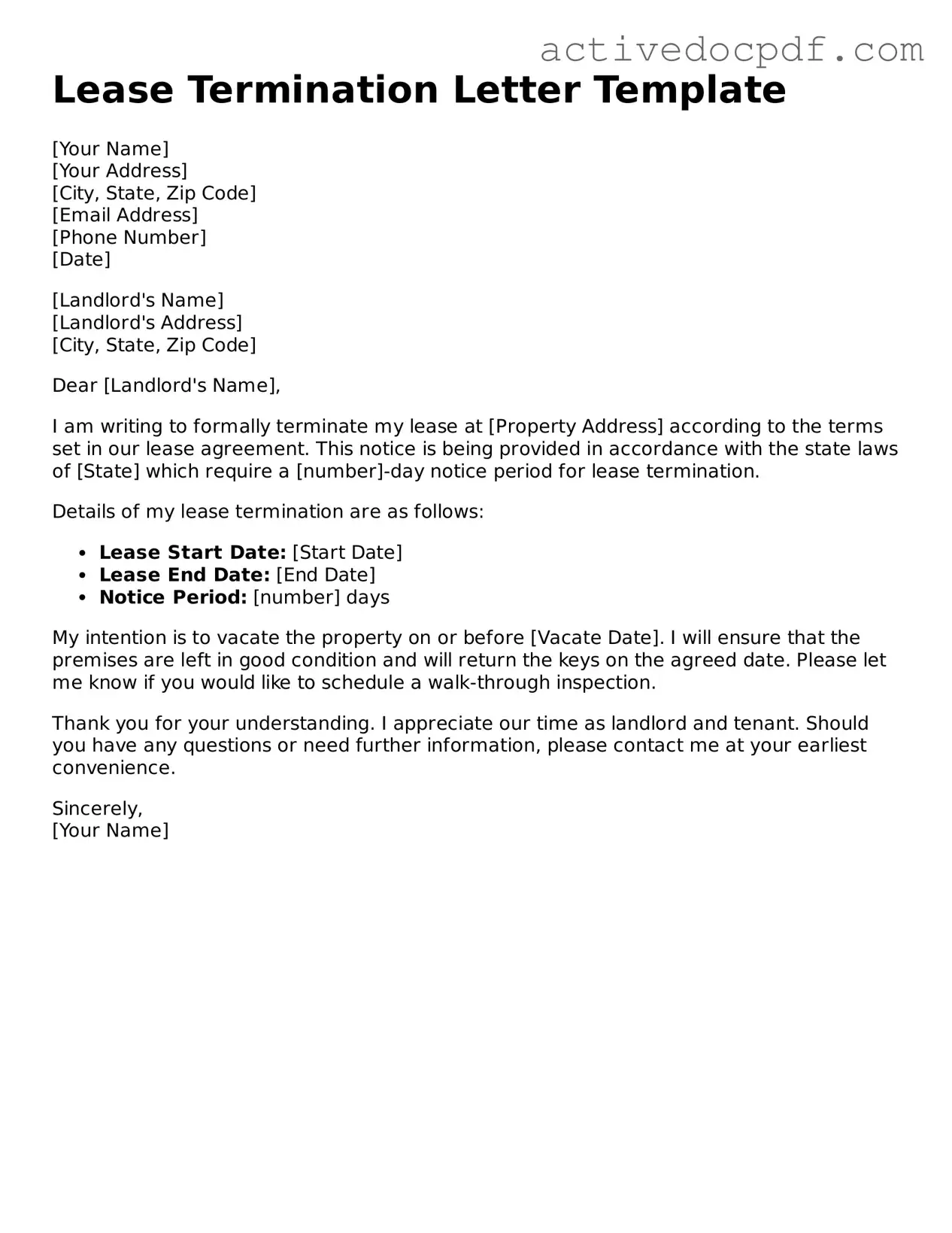What is a Lease Termination Letter?
A Lease Termination Letter is a formal document that notifies a landlord or tenant of the intention to end a lease agreement. This letter serves as a written record of the decision to terminate the lease, outlining key details such as the effective date of termination and any relevant conditions. It is important for both parties to have a clear understanding of the termination process.
When should I use a Lease Termination Letter?
You should use a Lease Termination Letter when you decide to end a lease agreement, whether you are a tenant or a landlord. Common scenarios include:
-
When a tenant wishes to vacate the rental property before the lease term ends.
-
When a landlord needs to terminate the lease due to violations or other reasons.
-
At the end of a lease term, if either party does not wish to renew.
Essential information to include in a Lease Termination Letter includes:
-
The date of the letter.
-
The names and addresses of both the tenant and the landlord.
-
The address of the rental property.
-
The effective date of termination.
-
A clear statement of intent to terminate the lease.
-
Any specific reasons for the termination, if necessary.
-
Contact information for any follow-up communication.
How much notice do I need to give before terminating a lease?
The required notice period typically depends on the lease agreement and local laws. Commonly, a notice period of 30 days is standard, but it can vary. Always check the lease terms and state regulations to ensure compliance. Providing adequate notice helps avoid potential disputes and ensures a smoother transition for both parties.
Can I terminate a lease without a valid reason?
In most cases, tenants can terminate a lease without a specific reason if they provide the required notice as outlined in the lease agreement. However, landlords may have different obligations and may need to provide valid reasons for termination, especially if it is before the lease term ends. Review the lease terms and applicable state laws for clarity.
What happens after I send the Lease Termination Letter?
Once the Lease Termination Letter is sent, the recipient should acknowledge receipt. This acknowledgment can be verbal or written. After the notice period, the lease officially ends, and both parties should prepare for the transition. For tenants, this may involve moving out and returning keys, while landlords may need to conduct a final inspection of the property.
Do I need to send the letter via certified mail?
While it is not always required, sending the Lease Termination Letter via certified mail is recommended. This method provides proof of delivery and ensures that the recipient receives the letter. Keeping a copy of the letter and any related correspondence is also advisable for your records.
